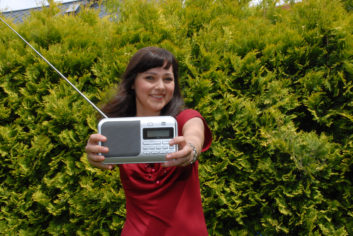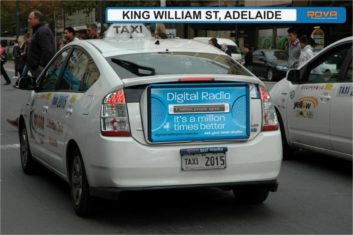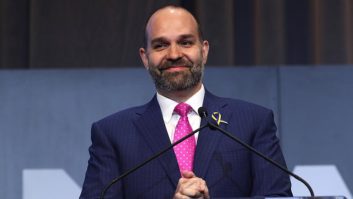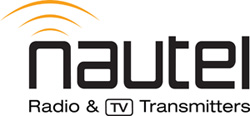Some 30 years ago, when the Institut für Rundfunktechnik — a research center focusing on broadcasting technology sponsored by public-service broadcasters in Germany, Austria and Switzerland —began work on what would eventually become the Eureka-147 DAB project, no one could have predicted how tangled the implementation of digital radio would become globally.

Worldwide, radio remains primarily analog, but the past year has seen progress toward a multiplatform future in which digital radio is an important player.
In the United Kingdom, the year ended with 29.1 percent of radio listening happening via a digital platform, according to the fourth quarter 2011 RAJAR audience measurement survey. That is up from 25 percent for the same quarter of 2010. The vast majority of these listeners are tuning through DAB receivers, although radio listening through a digital television platform and via the Internet also saw growth.
Steady progress
Elsewhere, digital radio saw steady progress in Australia, Czech Republic, Denmark, Malta, Sweden, Switzerland and other regions. In Norway, regulators have set 2017 as the year national public-service and commercial broadcasters sunset their analog operations; local radio will still have the option to operate on FM, however.
The biggest spur for digital radio in Europe, however came in August 2011 when German public and private broadcasters collaborated in a nationwide launch of DAB+ services.
DAB is a variant of the Eureka-147 DAB standard that uses a more efficient audio codec (HE-AAC v2) than the original DAB and more robust error correction.
With the backing of broadcasters and automakers, and a launch that coincided with the IFA international consumer electronics show in Berlin, German transmission-services provider Media Broadcast switched on a network of 27 transmitters covering some 38 million potential listeners and providing 14 new digital radio services. All major cities in Germany are covered by the DAB+ network.

“In 2010, we would have little idea that the German market would so effectively and cohesively work together to bring digital radio to one of the largest radio markets in Europe in such a short space of time,” said Jørg Jensen, president of the WorldDMB Forum, which promotes the Eureka-147 family of standards.
“The successful launch, and continued collaboration and development within Germany, has certainly had an impact on the rest of Europe.”
The gains of 2011 were not universal, however. MediaCorp in Singapore stopped simulcasting its FM programs on DAB in December 2011. The broadcaster found that listeners in the city-state were making greater use of its MeRaido app for streaming audio to phones than its DAB broadcasts.
But digital radio is not synonymous with DAB. The DRM30 system for digital broadcasting below 30 MHz and the FM HD Radio system saw movement during 2011.
Public-service broadcaster All India Radio doubled the hours of DRM30 programming it broadcasts on shortwave during 2011, and is upgrading and installing new transmitters across the country to expand its DRM30 capabilities.
In June 2011, as RW has reported, Mexico expanded authorization for broadcasters to use HD Radio nationwide. Previously, AM and FM HD Radio broadcasts were only allowed within about 200 miles of the northern border.
Economic crisis
What makes these advances more remarkable is that they happened during a prolonged global economic crisis.

“Introducing a new digital technology globally, against the reality of a serious economic crisis, is a huge and lengthy process,” said DRM Consortium Chair Ruxandra Obreja. However, “Where the benefits of digital radio are clear for all stakeholders — listeners, manufacturers, broadcasters and regulators — there is progress.”
WorldDMB noted that despite the overall difficult market for consumer electronics, sales of DAB receivers seem to be doing well. For example, “In Australia in late 2011, despite one of the weakest retail markets for many years, sales of digital radios recorded their biggest quarterly jump since Christmas 2010,” Jensen said.
IBiquity Digital VP InternationalBroadcasting Business Development Scott Stull said that rolling out digital radio during the economic crisis may benefit digital radio in the long term.
“Many broadcasters are rethinking business strategies, distribution methods and listener services in order to remain relevant, and digital broadcasting is being folded into this process. Digital radio is no longer a technical decision. Instead, decisions are being based on which approach will prove most beneficial to the business of radio …” Stull said.
This careful consideration is seen in the creative ways digital radio has been used to expand options for listeners, such as the pop-up DAB-only services pioneered in Australia.
Such time-limited services began as commercial opportunities, for example to promote Australian tours by artists such as P!nk, but at the end of 2010 and in early 2011, the public-broadcaster Australian Broadcasting Corp. used the same model to help communicate during disasters. ABC QLD Floods took a local ABC channel nationwide with information about severe flooding in Queensland at the start of 2011. A few weeks later, a similar station was launched to help keep friends and relatives across the Tasman Sea informed after a 6.3 Mw earthquake in Christchurch, New Zealand.
“There is the need for broadcasters to create the kind of exciting, new, multi-platform content that will convince the listeners to abandon their old, much loved analog radio for something new that offers not just good audio [on its own not a compelling reason any longer] but maybe a bit more,” Obreja said.
Part of that additional value is coming from the European Broadcasting Union, which has developed a palette of tools to promote “hybrid radio,” an effort to bridge analog and digital broadcast radio with IP-delivered content. Building on RadioDNS, hybrid radio helps deliver images, descriptive text and other content to radio listeners in an efficient manner, regardless of the transmission standard.
Looking ahead
Broadcasters will have more chances to find ways to create that “a bit more,” especially as nations near the 2015 to 2020 deadlines to transition to digital television, which frees up spectrum for other uses and acclimates consumers to the idea of digital broadcasting.
In the near term, however, 2012 is expected to see continued expansion of digital radio.
Hong Kong has launched DAB+ broadcasts with a total of 13 channels from several private operators and from public-service broadcaster RTHK. An additional five channels are slated to launch by the second quarter of 2012. By March 2012, a total of seven hilltop transmission sites are expected to cover 95 percent of the population of Hong Kong with DAB+ signals, according to proponents.
In France, regulators are considering adding DAB+ services to existing DMB-A services. DAB+ trials are under way in Nice and Marseille, and local broadcasters are pushing for support for additional trials across the county.
Poland is planning a four-city DAB+ trial to coincide with the Euro 2012 soccer championship in June. Matches will be held in Warsaw, Wroclaw, Gdansk and Poznan, and the regional public-service broadcasters in the cities, along with Polskie Radio, will cooperate in the trial.
A DAB+ trial is ongoing in Malaysia, and Italy and Spain have also moved forward with clear plans to launch digital radio networks. Additional trials and launches are planned for Belgium, the Netherlands, South Africa and other nations.
IBiquity is looking beyond 2012 to 2013 for a full-scale rollout of HD Radio services across Mexico; the company also is promoting trial projects in the Philippines, Romania, Thailand and Bangladesh.
South Korea is among the nations looking to complete its digital television transition in 2012, and then attention will turn to digital radio, according to the Korean World DMB association. Eureka-147-based T-DMB multimedia broadcasting, including DAB audio services, is well established in the county, but further development of multimedia radio services for 2014.
In Japan a similar transition needs to be worked out; 2011 saw the end of test services launched in 2003 by Digital Radio Promotion Association in Osaka and Tokyo using the ISDB-TSB standard. With the Japanese DTV transition expected to end this March, there are hopes that attention will turn to the digital radio, although no projects have been announced.
Russia and India are progressing with their DRM30 rollouts, but the DRM+ system, which is designed for operation in the VHF frequency bands, is gaining interest, too. In January 2012, the International Telecommunications Union added DRM+ to its recommendations for digital sound broadcasting in the 30 MHz to 3 GHz range.
In late 2011, DRM+ also received backing from community broadcasters when Community Media Forum Europe [CMFE] and AMARC Europe, the European arm of the World Association of Community Radio Broadcasters, called upon E.U. officials to support and promote DRM+ as the primary digital radio standard for small-scale broadcasting.
In February, the European Commission’s Information Society and Media Directorate-General replied to CMFE and AMARC stating that E.U. member states have not sought continent-wide coordination on digital radio standards and that current policy is to maintain neutrality in terms of technology.
The CMFE/AMARC call for DRM+ underscores one problem that remains for digital radio. While different standards may better suit varying broadcast needs, multi-standard receivers that make tuning across standards and bands are still needed. The European Commission noted positive signs of multiplatform support in its reply to CMFE and AMARC.
T. Carter Ross is former editor in chief of Radio World International.
Digital Radio Receivers on Rise

From the beginning, digital radio has faced a “chicken or egg” problem. Would broadcasters invest in digital radio without receivers on the market for listeners to use? Would receiver manufacturers make products without programming for listeners to tune?
But with automakers and consumer electronics moving ahead to add digital radio options to at least some of their products, the stalemate seems to have broken.
Throughout 2011, the WorldDMB Forum worked with automakers to speed the integration of DAB/DAB+/T-DMB into new models. The launch of DAB+ in Germany was backed by BMW, Audi and Daimler, and German broadcasters are including TMC/TPEG traffic information services as part of the DAB+ project.
When the 2015 FM analog shutoff date was first being discussed, automakers came together and set 2014 as the target date to have DAB receivers in all new cars for the U.K. market; Ford has accelerated its timetable to 2013.
According to data from a survey completed by a trade group representing the interests of British auto industry and the British equivalent of the Kelley Blue book, some 20.1 percent of new U.K. cars had a DAB receiver as standard in the fourth quarter of 2011, up from just 7.7 percent for the same quarter of 2010.
In many markets, DAB/DAB+ is offered as an option or standard by Audi, BMW, Fiat, Ford, Jaguar, Land Rover, Lotus, Mercedes-Benz, Mini, Renault, Seat, TVR, Toyota, Vauxhall, Volkswagen and Volvo.
Also, 2011 saw the introduction of several new aftermarket DAB adaptors, such as the Pure Highway 300Di, making it possible to add digital radio reception to existing cars.
Similarly, iBiquity reports that 23 automakers offer HD Radio technology in approximately 100 models in this country; in about half of those. HD Radio is standard.
At IBC 2011 last fall, the DRM Consortium highlighted its new receiver partnerships, which included manufacturers developing DRM30/DRM+ receivers for in-car and home use.
As digital radio receivers make their way into cars, the next steps will be in the realms of multi-standard receivers and the integration of digital radio receivers with mobile phones.
At CES 2012, NXP Semiconductors introduced an automotive digital co-processor, the SAF356X, that supports HD Radio, DAB/DAB+/T-DMB, and DRM30/DRM+.
Receiver introductions in other form factors are expected to increase during the coming year, too. WorldDMB Forum indicated that a mobile phone with an embedded DAB/DAB+/T-DMB was expected to be released at the Mobile World Congress trade show in Barcelona in March.
Also, in 2013 the patent on Eureka-147 DAB (although not on DAB+ or T-DMB) will expire, which WorldDMB Forum expects will have a positive effect on manufacturers looking to include DAB on their devices.
— T. Carter Ross












